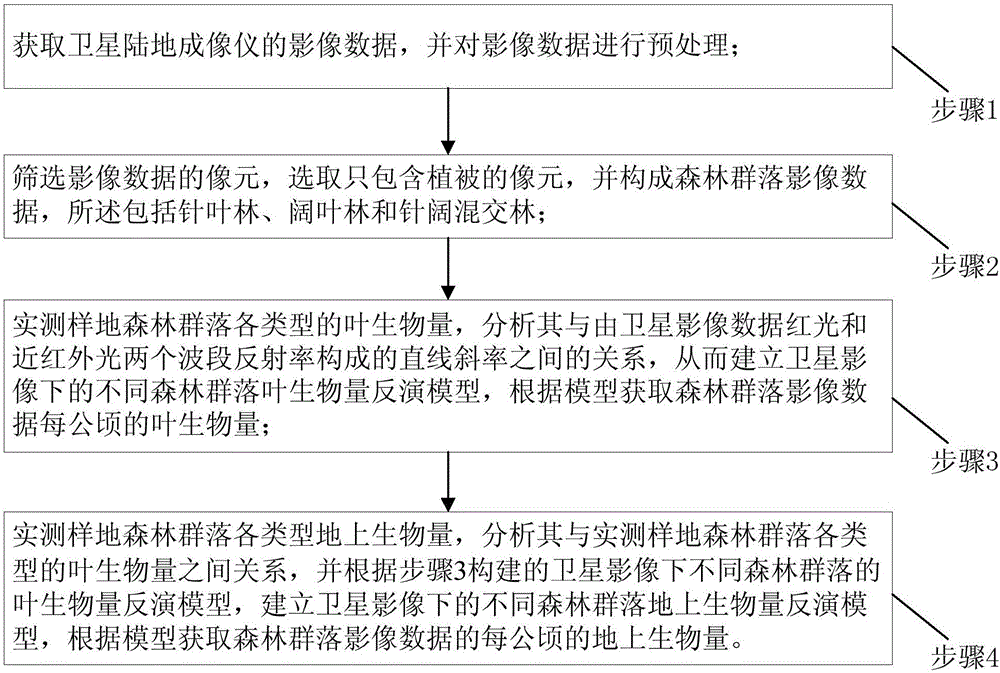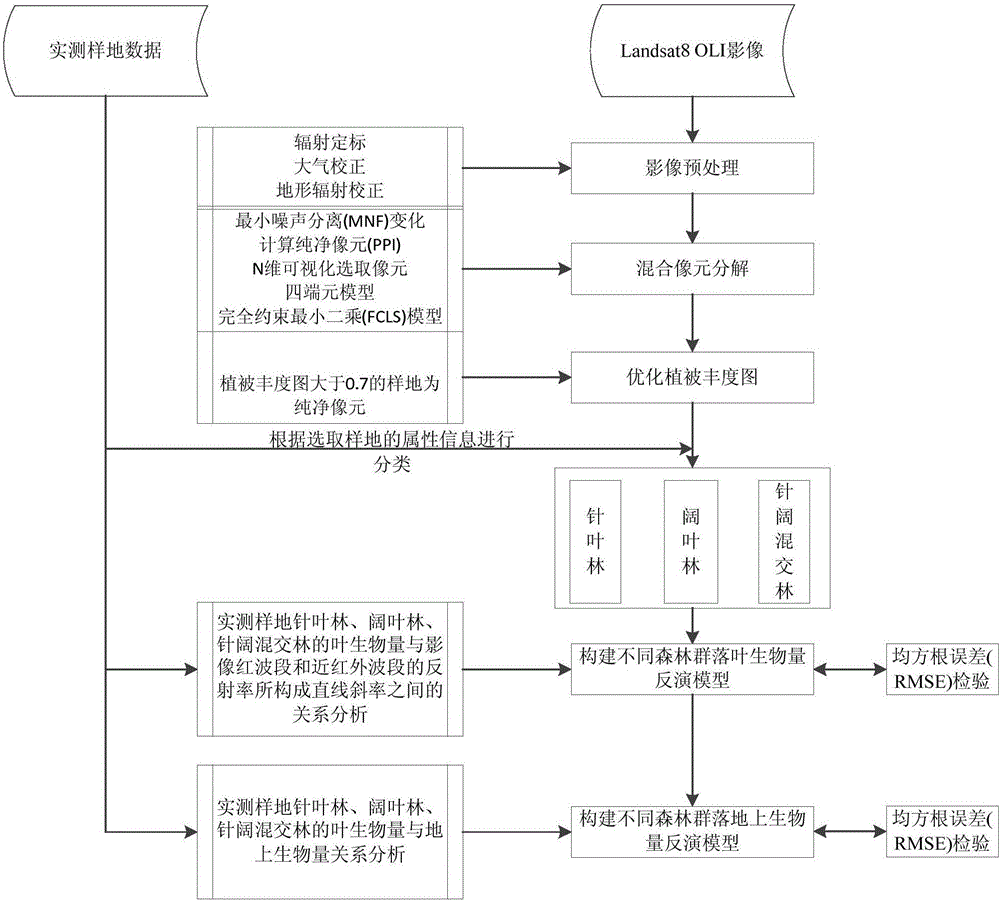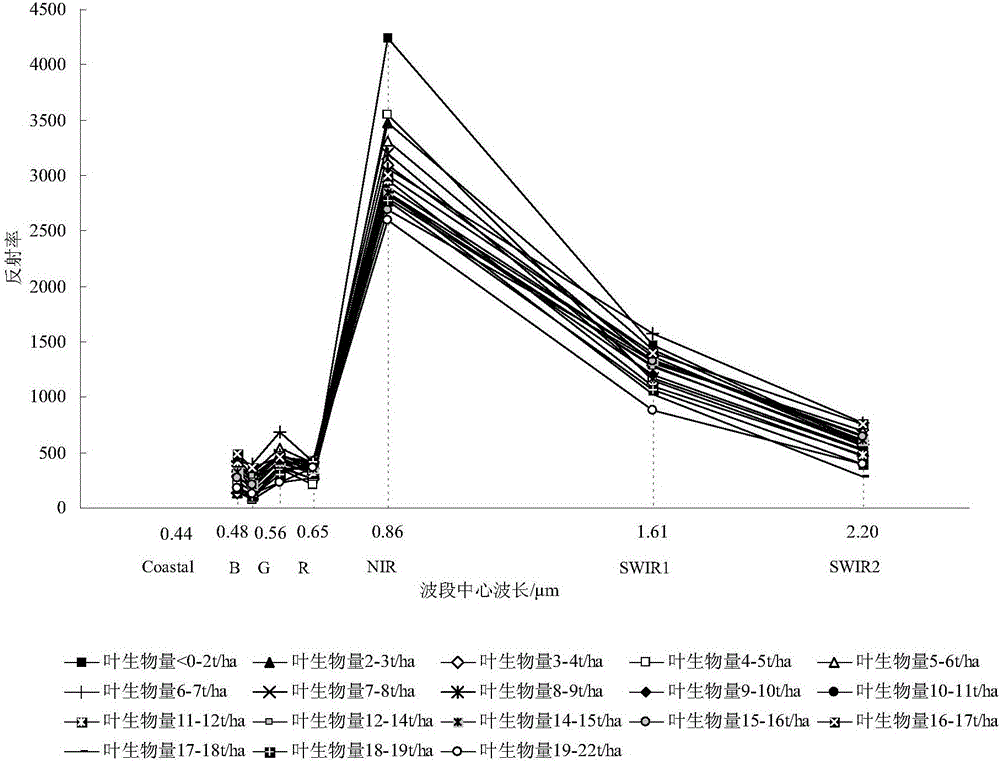Forest-biomass remote sensing inversion method based on spectral curve characteristic differentiation
A forest biomass and spectral curve technology, applied in the field of forest biomass remote sensing inversion based on spectral curve feature differentiation, can solve the problems of complex radar extraction, smaller degrees of freedom, and lower estimation accuracy, and achieve inversion good effect
- Summary
- Abstract
- Description
- Claims
- Application Information
AI Technical Summary
Problems solved by technology
Method used
Image
Examples
Embodiment
[0041]Plant leaves have strong absorption properties in the visible red band and strong reflection properties in the near-infrared band, which is the physical basis for vegetation remote sensing monitoring. The present invention finds that the lower the leaf biomass is, the higher the reflectivity of the near-infrared band is, and the steeper the slope of the two bands of near-infrared and red light is by investigating the graph of the leaf biomass and the corresponding Landsat8OLI image pure vegetation pixel reflectance. This may be related to the water content of the leaf canopy in the sample plot. When the leaf biomass of the vegetation in the sample plot is low, the total water content in the vegetation leaf surface of the sample plot is lower, and the near-infrared band of the Landsat8OLI sensor is sensitive to water The content of is the most sensitive, so the slope of the red light and near-infrared band reflectance can effectively reflect the difference in leaf biomass....
PUM
 Login to View More
Login to View More Abstract
Description
Claims
Application Information
 Login to View More
Login to View More - R&D
- Intellectual Property
- Life Sciences
- Materials
- Tech Scout
- Unparalleled Data Quality
- Higher Quality Content
- 60% Fewer Hallucinations
Browse by: Latest US Patents, China's latest patents, Technical Efficacy Thesaurus, Application Domain, Technology Topic, Popular Technical Reports.
© 2025 PatSnap. All rights reserved.Legal|Privacy policy|Modern Slavery Act Transparency Statement|Sitemap|About US| Contact US: help@patsnap.com



